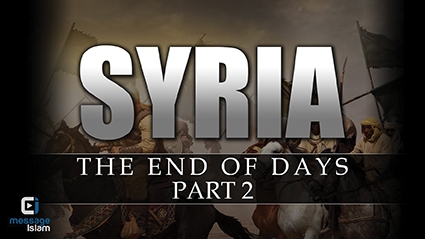End of Days Part 2- Violent Apocalyptic Groups
Most terrorist organizations avoid offending their audience with overly violent, sadistic acts. For instance, Al-Qaeda has criticized terrorist groups such as the Armed Islamic Group of Algeria (GIA) and the infamous Al-Qaeda in Iraq (AQI), for their demonstrated violence against Muslims.
On the contrary, violent apocalyptic groups such as the Islamic State do not regret engaging in acts of barbarism, as they see themselves taking part in a cosmic war between good and evil, thus making their actions significantly harder to foresee than the actions of politically motivated groups. This explains ISIS’ motivation for retaking Dabiq as a pillar of the prophecy, rather than a military strategic location.
To begin with, it is important to analyze aggressive behaviour in the apocalyptic groups. There are two types of violence present in such groups: The violence committed by the members against each other and the violence against the outside world. However, it is extremely hard to predict the group’s intentions. Michael Barkun, a leading scholar on violent apocalyptic groups has stated:
“Predictions of violence on the basis of belief alone are notoriously unreliable; Apocalypticists are more likely to engage in violence if they believe themselves to be trapped or under attack. Both conditions are as much a product of their own perception as of outside forces”.
Although it is highly unlikely that the Islamic State members will end up committing mass suicide like the American apocalyptic group Heaven’s Gate, examining the Daesh fighters from this unusual lens helps us anticipate their next steps. For instance, an interesting example to compare would be the Muslim apocalyptic cult that initiated the 1979 Meccan Rebellion.
The group believed that one of its members, Muhammad al Qahtani, was the Mahdi (The Guided One), and intended to attack Mecca in order to fulfil the prophecy. Soon after their siege of Mecca, al Qahtani was killed as a result of a Saudi Special Forces operation. Yet, the group agreed not acknowledge the death of the presumed Mahdi, and continued their fight while refusing to face the obvious truth. Eventually, the apocalyptic group was captured and Islam’s holiest site retaken.
In fact, most of the captured members remained devoted to their apocalyptic views, despite the fact that their Mahdi had been killed. This example should be considered when analysing further actions of the Islamic State, since the Daesh fighters might well follow this model if one of their prophecies fail. The violent apocalyptic groups tend to formulate renewed prophecies to better suit their existing needs.
Like other apocalyptic groups, the Islamic State is also driven by a goal to “purify” the world and start a new era, in which their preferred interpretation of Islam becomes widely accepted. Yet, it is impossible to know whether the leaders of the Islamic State such as Baghdadi truly believe in the approaching end of times, or if they have hijacked the prophecies in order to attract more recruits.
Read the first part here: http://georgiatoday.ge/news/5614/End-of-Days%3A-What-Empowers-ISIS%3F
Zurab Khutsianidze












